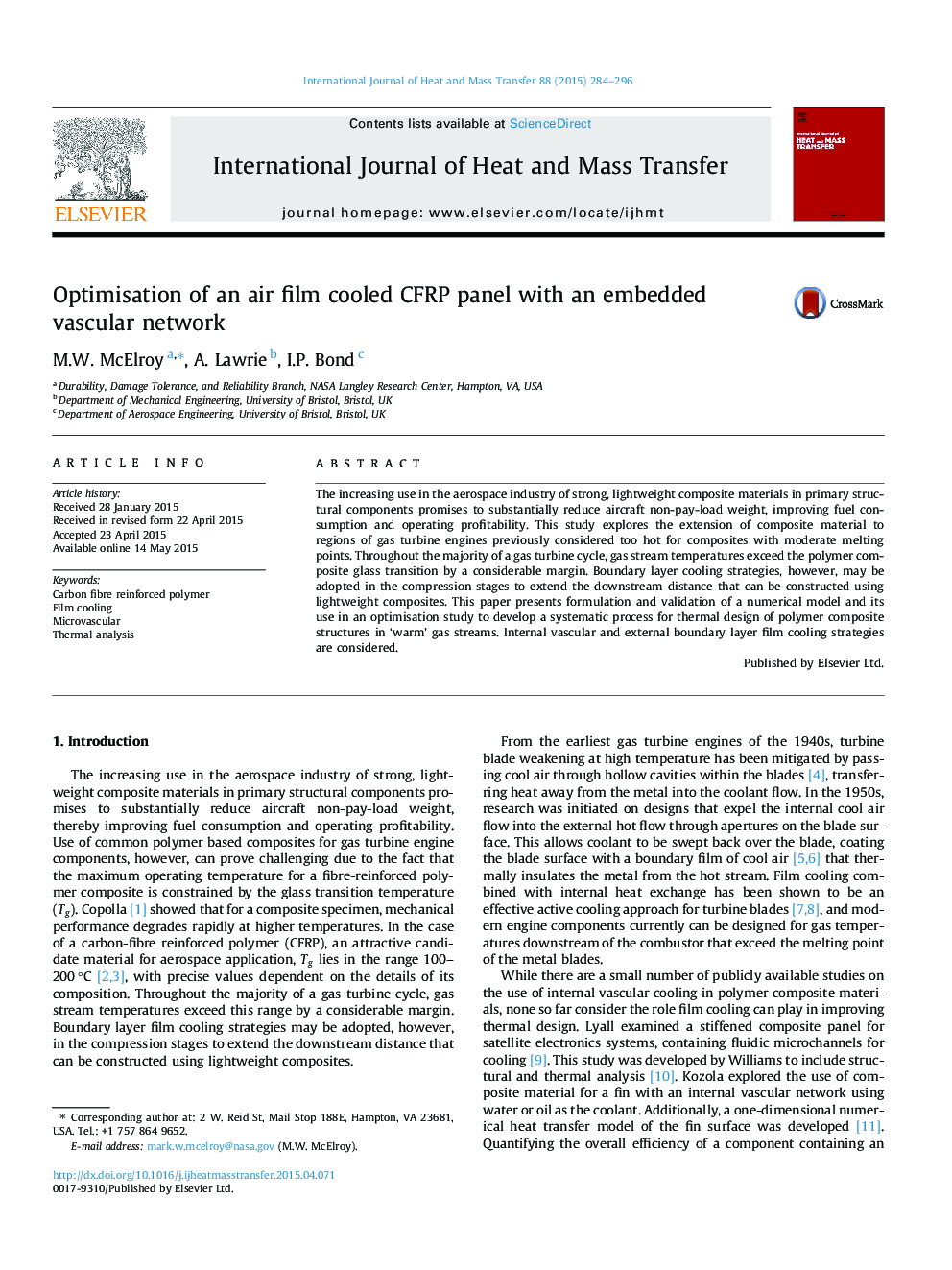| Article ID | Journal | Published Year | Pages | File Type |
|---|---|---|---|---|
| 657023 | International Journal of Heat and Mass Transfer | 2015 | 13 Pages |
Abstract
The increasing use in the aerospace industry of strong, lightweight composite materials in primary structural components promises to substantially reduce aircraft non-pay-load weight, improving fuel consumption and operating profitability. This study explores the extension of composite material to regions of gas turbine engines previously considered too hot for composites with moderate melting points. Throughout the majority of a gas turbine cycle, gas stream temperatures exceed the polymer composite glass transition by a considerable margin. Boundary layer cooling strategies, however, may be adopted in the compression stages to extend the downstream distance that can be constructed using lightweight composites. This paper presents formulation and validation of a numerical model and its use in an optimisation study to develop a systematic process for thermal design of polymer composite structures in 'warm' gas streams. Internal vascular and external boundary layer film cooling strategies are considered.
Related Topics
Physical Sciences and Engineering
Chemical Engineering
Fluid Flow and Transfer Processes
Authors
M.W. McElroy, A. Lawrie, I.P. Bond,
